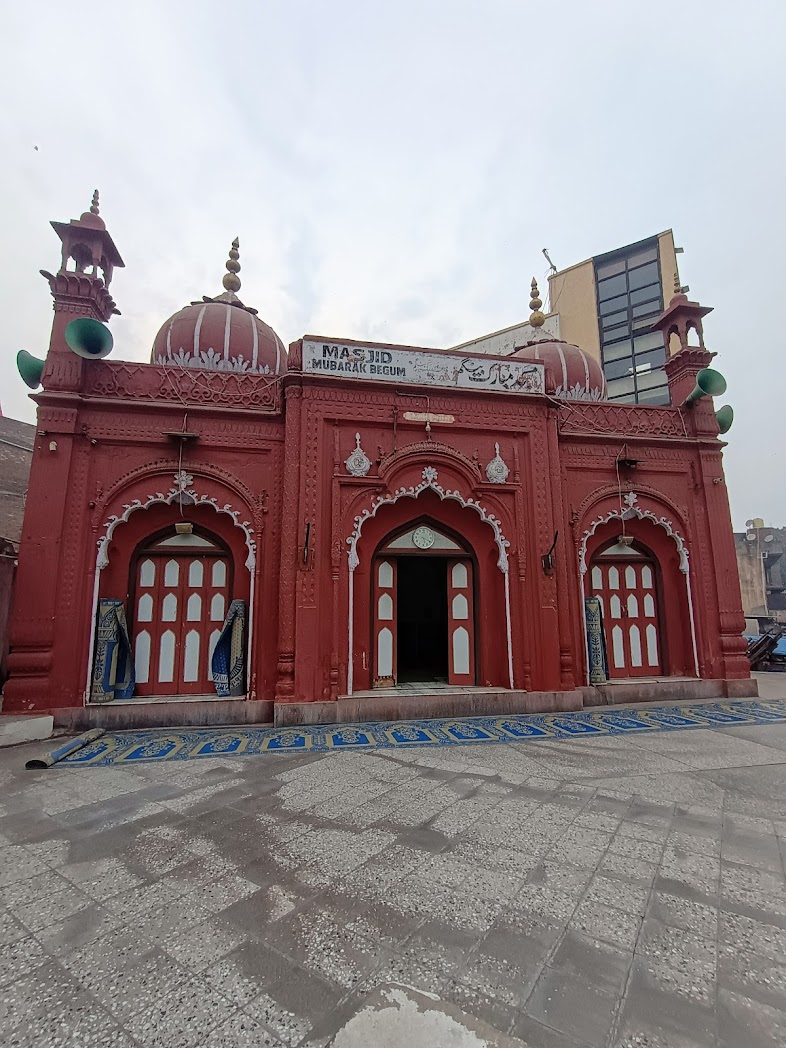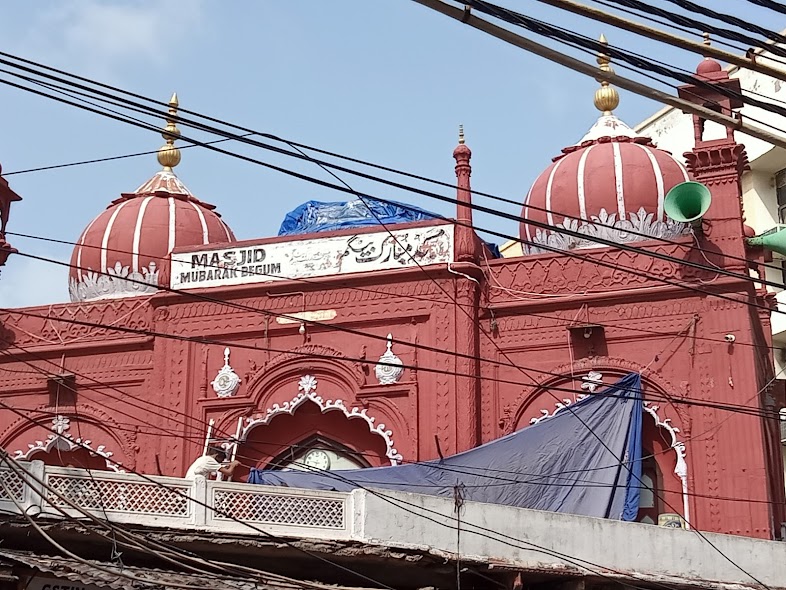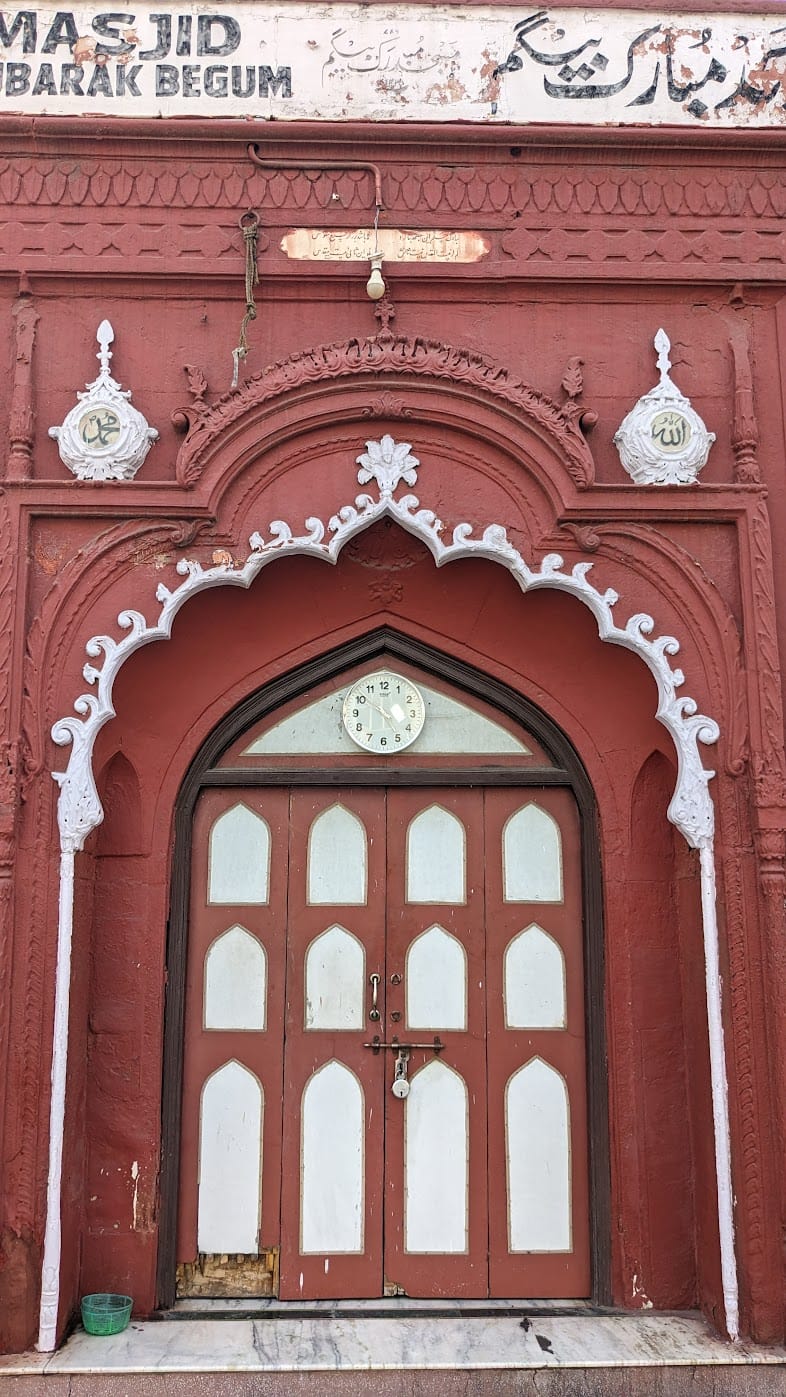


Mubarak Begum Masjid, is a historic mosque located in the Chawri Bazaar area of Old Delhi, India. It holds significant historical importance and is a testament to the rich Mughal architecture of the 19th century. Here are key details about its history and establishment: Establishment: Built by: Mubarak Begum, a concubine or courtesan in the Mughal court, who later became the wife of Shams-ud-Din, an official in the Mughal administration. Construction Year: The mosque was built in 1823 during the declining years of the Mughal Empire. Architecture Style: The mosque features Indo-Islamic architecture, with elements that reflect both Mughal and local influences. Historical Significance: Mubarak Begum, after whom the mosque is named, was a prominent figure in the Mughal court. Her decision to construct this mosque was unusual for a woman of her background, which makes this monument unique. The mosque's colloquial name, "Randi ki Masjid" (meaning "the mosque of the courtesan"), reflects the societal prejudice faced by Mubarak Begum due to her profession. Despite its small size compared to other Mughal structures, Mubarak Begum Masjid remains an important part of Delhi’s heritage, symbolizing the eclectic social fabric of the Mughal era. It is located in one of the busiest areas of Old Delhi, surrounded by markets and shops, which have grown around it over the centuries.